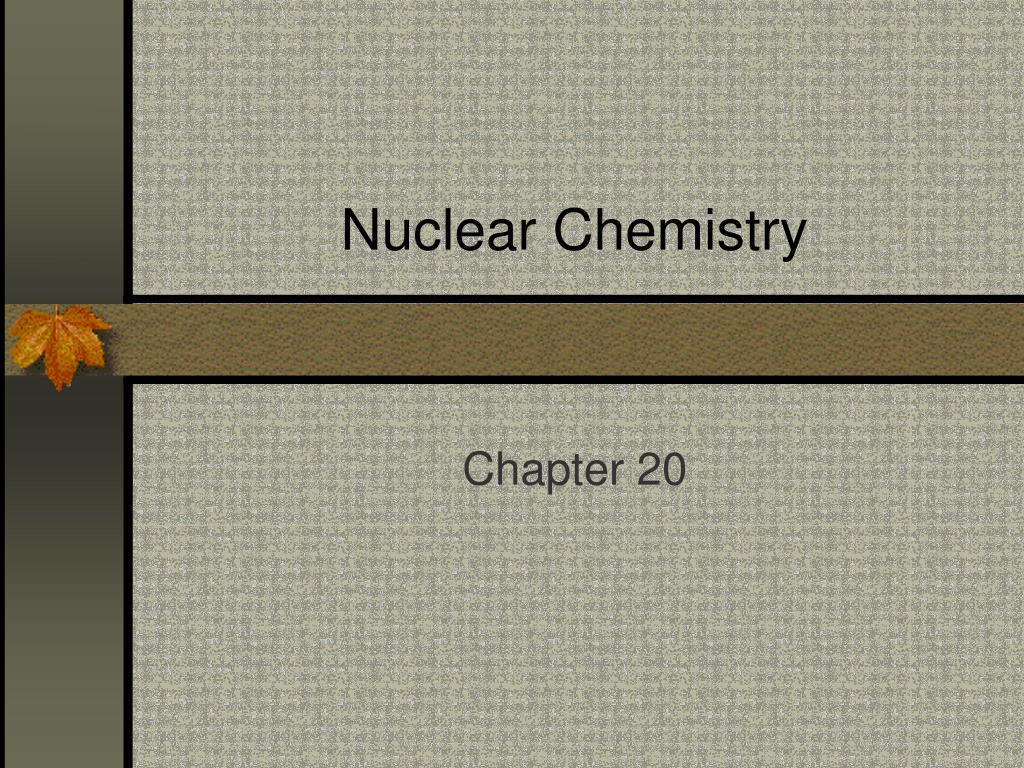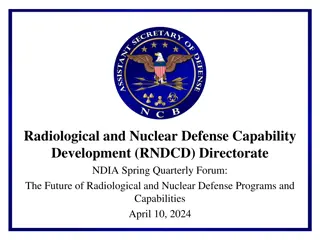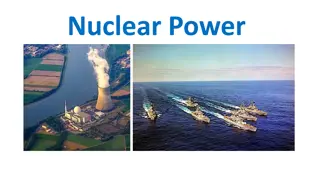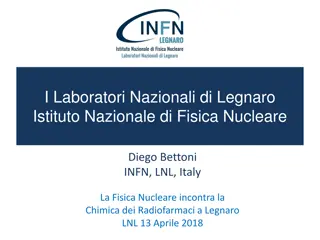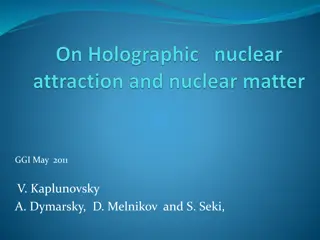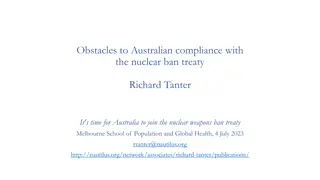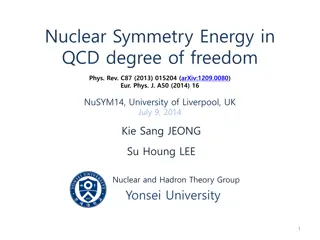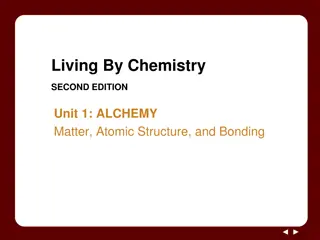Understanding Nuclear Chemistry: A Comprehensive Overview
Explore the world of nuclear chemistry in Chapter 20, covering stable and unstable isotopes, radioactivity, radiation exposure, radioactive particles, types of radiation (alpha, beta, gamma), and how to stop radiation. Learn about isotopes, decay processes, and the impact of radiation on our daily lives.
Download Presentation

Please find below an Image/Link to download the presentation.
The content on the website is provided AS IS for your information and personal use only. It may not be sold, licensed, or shared on other websites without obtaining consent from the author. Download presentation by click this link. If you encounter any issues during the download, it is possible that the publisher has removed the file from their server.
E N D
Presentation Transcript
Nuclear Chemistry Chapter 20
Stable and unstable Most atoms have a stable nucleus Meaning they will not fall apart But all atoms have unstable isotopes that will fall apart over time. Isotopes- atoms of the same element with a different number of neutrons Atoms tend to be stable with the same or slightly larger number of neutrons as protons.
Graph of Isotopes band of stability
Radioactivity (radioactive decay) the nucleus of unstable atoms breaking apart and emitting particles and/or electromagnetic radiation. An unstable isotope converts into a daughter isotope and releases radiation in the process. Particles and radiation are dangerous. electromagnetic radiation include things like light, infrared, ultraviolet, x-rays, microwaves, and gamma rays.
Radiation It is out there You are exposed to radiation everyday. Small amounts are not really harmful. The sun releases radiation that hits the Earth (and you) Certain products are radioactive (smoke detectors, TV s and computers) Even the potassium in bananas is radioactive.
Radioactive particles Only radioactive isotopes will release radiation. Radioactive isotopes will act exactly like non-radioactive isotopes of the same element until they fall apart . e.g. Carbon -12 is not radioactive. Carbon-14 is radioactive. C-14 will act exactly like C-12 until undergoes radioactive decay.
Types of radiation (alpha) radiation- 2 protons and 2 neutrons (helium nucleus) are released by the atom particle-2 p+ 2 no (beta) radiation 1 neutron breaks into a proton and an electron, the electron is released particle- an electron (gamma) radiation An energetic atom releases energy as a photon (gamma ray). There is no particle, just a photon.
Stopping radiation type of radiation radiation How to stop it Danger Level a sheet of paper, or skin Most damaging radiation a sheet of aluminum foil Damaging radiation several cm of lead Still damaging
Most Dangerous particles are the most dangerous until they are slowed down. Particles are dangerous when moving fast particles are exceptionally large compared to the other particles, and hit and damage many things within a cell. It is like a cannon ball ripping through a cell, destroying things along the way. However, each time they hit something, they slow down some. Losing some of their kinetic energy.
Continuing If it hits something nonliving (dead cells or molecules), it will damage the nonliving structure. However, it was already dead. particles are much smaller and therefore hit less things in the cell. Therefore they are less damaging to the cell but have more penetrating power. That is to say they move through more layers of cells before losing enough kinetic energy to no longer be dangerous. radiation has even more penetrating power, but does less damage.
Where does radiation come from only about 18% of the radiation that hits the average person comes from manmade sources. The majority (15%) of that comes from medical procedures. The rest are naturally occurring on the Earth. Mainly radon gas (naturally occurring). We have actually increased our exposure to radon by making better basements
Detecting Radiation A Geiger counter is the most familiar tool for detecting radiation. The probe of this device contains a gas, normally argon. When radiation hits the gas it ionizes it, or knocks an electron off. Ar Ar+ + e- These electrons falling off creates a weak electric pulse, which makes a speaker click.
Scintillation counter Works very similar to a Geiger counter, except instead of a gas tube, the radiation is sent into a solid crystal, like sodium iodide, that is excited from the radiation, losing an electron that flows along a circuit. Scintillation counters are known for red flashes when detecting radiation.
Half life Half life is the time it will take for half the material to decay into radiation. Unstable isotopes have a short half life (3.8 days for Radon-222) (Carbon-10 has a half life of 19.2 s) More stable ones have a longer half life (5715 years for Carbon-14) Stable isotopes have no half life since they do NOT decay. (Carbon-12)
More Half life If two half lives pass the material is not gone you actually have remaining half is left after the first half life, then half of that after the second half life. Not as much radiation is coming out (since there is less mass) but it is still there.
Graphing half life mass of isotope 0 1 2 3 4 number of half lives
